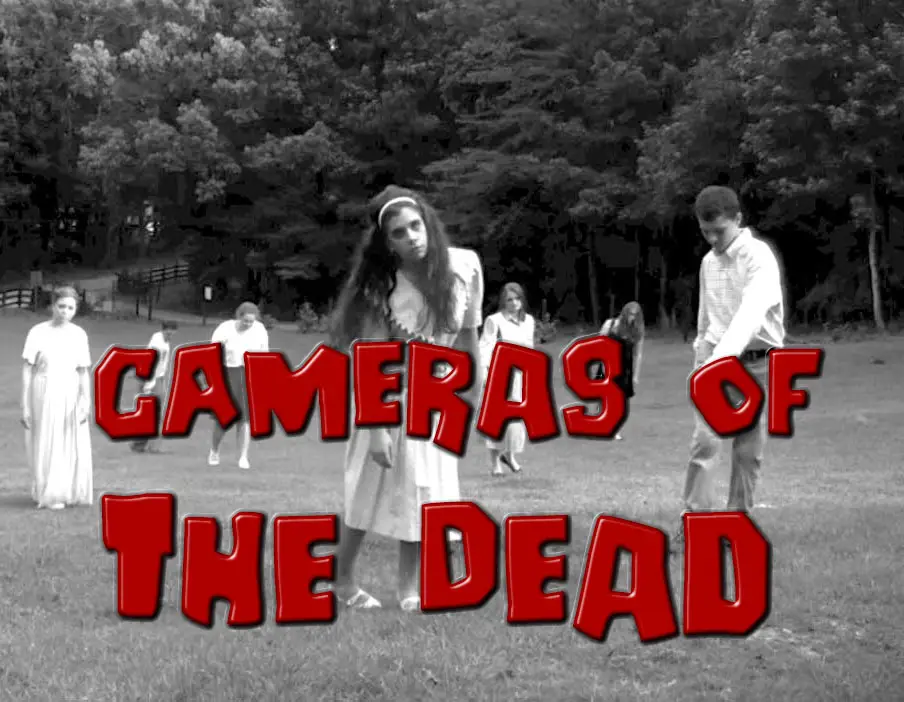 This review is part of the Cameras of the Dead series which I have been publishing every year on Halloween and “Halfway to” Halloween, featuring three cameras that I’ve wanted to review that either didn’t work, or was otherwise unable to shoot.
This review is part of the Cameras of the Dead series which I have been publishing every year on Halloween and “Halfway to” Halloween, featuring three cameras that I’ve wanted to review that either didn’t work, or was otherwise unable to shoot.
I am republishing each of those individual reviews this October in anticipation of this Halloween’s Cameras of the Dead post as a way to revisit the cameras of the past that allows them to be properly indexed on the site.
This is a Topcon Wink Mirror S, a 35mm Single Lens Reflex camera made by Tōkyō Kōgaku K.K. starting in 1963. The Wink Mirror S had a central leaf shutter and used interchangeable Topcor UV lenses, which was shared by later cameras like the Auto 100/Uni and Unirex models. There were two other Topcon Wink SLRs, but both had a fixed lens. The name “Wink” was Topcon’s marketing name for an SLR with an Instant Return Mirror which at the time of it’s release, was reserved for professional tier cameras. The Wink Mirror S supported Shutter Priority Auto Exposure via a coupled selenium exposure meter. Although Topcon continued to make UV-mount SLRs until the 1970s, the Wink Mirror S was a short lived model that is hard to find today.
Film Type: 135 (35mm)
Lens: 53mm f/2 Tokyo Kogaku UV Topcor coated 6-elements
Lens Mount: Topcon UV Bayonet
Focus: 3.5 feet to Infinity
Viewfinder: Coupled Reflex Pentaprism Viewfinder
Shutter: Seikosha-SLV Leaf
Speeds: B, 1 – 1/500 seconds
Exposure Meter: Coupled Selenium Cell w/Viewfinder Meter Readout
Battery: None
Flash: Accessory Shoe with M and X Sync
Weight: 815 grams (w/ lens), 672 grams (body only)
Manual: https://www.cameramanuals.org/pdf_files/topcon_wink_mirror_s.pdf
My Thoughts
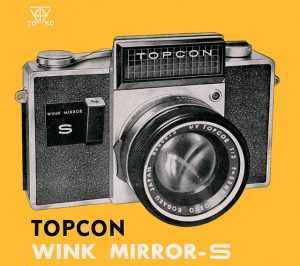
I am a big fan of the Topcon RE Super and it’s variants. In my review for that camera, I praised it’s build quality, features, and in body meter. This was a camera that compared favorably to the Nikon F which as we all know was one of the most successful 35mm SLRs of all time.
So when I had a chance to shoot one of Topcon’s consumer models, the Unirex, I was excited. I picked up a nice looking example and took it out shooting, except I didn’t, because it was broke. So I got another, and awww shucks, wouldn’t ya know it? That one was dead too.
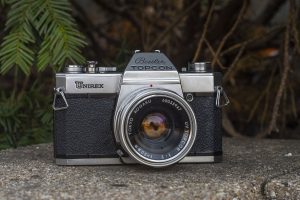
Maybe my friend Adam Paul would have better luck with his Unirexes. Nope. How about someone who works with classic cameras all day? I reached out to Johnny Sisson at Chicago’s Central Camera and asked about Topcon’s UV series of cameras and he threw holy water in my face and threatened to burn me on a stake if I ever mentioned that camera again.
As it turns out, Topcon did a pretty good job making professional 35mm SLRs, but not anything else, as their leaf shutter cameras like the Uni, Auto 100, and Unirex were pretty terrible.
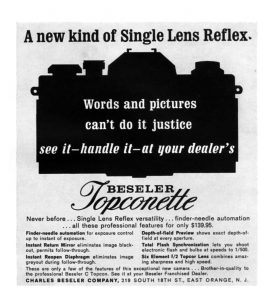
So when I had a chance to shoot the predecessor to those models, the Topcon Wink Mirror S, I didn’t expect much. Amazingly the camera worked when I first picked it up at a local thrift shop. Thinking I might finally be able to test a Topcon leaf shutter SLR, I quickly loaded film into it, at which time it promptly died.
There’s not a lot of information about these cameras as I believe they were only sold for a year, maybe two, before being replaced by the Uni. Although I do believe the Wink Mirror S was sold in the United States, I was unable to find any advertising mentioning it in any publications.
I did however, find a short review of the fixed lens Beseler Topconette, which was the US version of the Wink Mirror E, and it sold in February 1962 for $139.95 suggesting the interchangeable lens Wink Mirror S would have had cost somewhere around $20 – $30 more. My best guess for a retail price for the S would have been $169.95 with steep discounts soon to follow as more advanced models hit the market. If my estimate is correct, that price compares to about $1425 today which is right in line with a mid-level SLR with cutting edge technology.
Unlike German leaf shutter cameras like the Voigtländer Bessamatic and Zeiss-Ikon Contaflex, the Wink Mirror S has a Japanese level of minimalism in it’s design. The top plate of the camera has the rewind knob, meter read out, accessory shoe, and rapid film advance lever. The shutter release is on the front of the camera, but visible from the top. On the bottom is the door release, 1/4″ centrally located tripod socket, and rewind release button.
The Wink Mirror S was Topcon’s first camera to use their new UV lens mount. The letters UV stand for Ultraviolet as the entire series came with an anti-UV coating on the exterior surfaces to block out ultraviolet light for improving contrast. Their professional RE series used the Ihagee Exakta mount, so this was Topcon’s first attempt at their own lens mount.
Swapping lenses isn’t as easy as it is on other bayonet lens mount systems and requires a firm grip with both hands. To swap the lens, you must press and hold a narrow lens locking lever which is near the 5 o’clock position on the side of the shutter. While pressing this lever, rotate the lens clockwise until you can remove it. While rotating the lens both during removal and installation, you can feel resistance from the various shutter cocking and aperture linkages that the lens uses, giving a less than inspiring feel to the whole process.
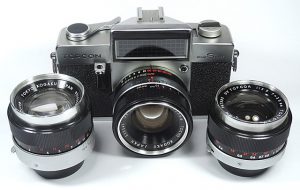
At the time of it’s release, the Wink Mirror S had two other lenses available for it, a 35mm f/3.5 and a 100mm f/4. Later, as more UV mount cameras were made, other lenses were available that would fit, but longer telephoto lenses would be incompatible with the metering system on the Wink Mirror S meaning these lenses could only be shot with auto exposure off.
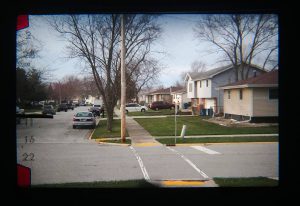
The viewfinder is large and bright, with a noticeable circular Fresnel pattern radiating out from the central microprism spot. The entire viewing screen can be used for focus, unlike other German leaf shutter SLRs like the Contaflex in which only the center can be used to see focus.
On the left side is a very large analog metering scale which shows which f/stop will be used when the shutter is fired. At the top and bottom of the scale are two red zones to indicate over and under exposure. The metering system only works with shutter speeds 1/30 to 1/500. Looking at the shutter speed scale, these numbers are in red, whereas 1/15 and under are in white. With the camera in Auto mode, the white speeds are locked out. With the camera not in Auto mode, you can select the white speeds, but the meter will not give a reading.
The overall feel of the Topcon Wink Mirror S is that of a smaller version of the RE Super. Like that model, the body is boxy with a lot of angles to it. The viewfinder is excellent, and Tokyo Kogaku was very good at making lenses. The build quality seems good, but as we would later find out, Topcon’s implementation of the Seikosha leaf shutter would be it’s biggest downfall.
My Results
This Topcon Wink Mirror S is one of many Topcon UV mount cameras that I’ve come across and none have worked correctly. This one came the closest to working in that the shutter would only operate every other wind of the film advance lever, and even then it would only sometimes fire. I figured that maybe if I got some bulk film and loaded a long enough strip of film into it and fired it enough times, I’d get enough images for a usable review.
In late March 2020 at the beginning of the COVID-19 pandemic in my area, I took the camera out with some bulk Kodak TMax 100 in it. I figured that since 1/125 shutter speeds are often a safe bet on cameras with questionable shutters, and I had no idea how accurate the meter would be, I would just use a single shutter speed and meter using Sunny 16.
Frustratingly, when the Topcon Wink Mirror S worked, the images it produced were great. I had always known Tokyo Kogaku could make great lenses as their RE series lenses were some of the best made. I was curious to see what kinds of cost cutting went into the optics of the UV lenses, and I can see the answer is “none”.
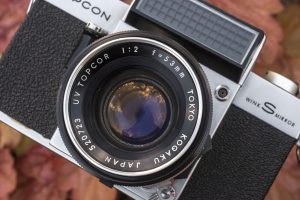
These 6 shots are the only six I got on a roll of about 36 exposures. After the 6th shot, the camera completely seized and wouldn’t fire at all, so I removed the film and finished it in something else.
Part of me really wants to get this thing going again, but as with all leaf shutter SLRs, getting them serviced is difficult and expensive, and considering this camera has little to no value, doing so would also be impractical. Still, if you ever were to come across one of these in good working order, shoot it as you’ll likely be very happy with the images it makes.
Related Posts You Might Enjoy
External Links
http://camera-wiki.org/wiki/Topcon_Wink_Mirror_S
https://simonhawketts.co.uk/2017/03/25/topcon-wink-e-mirror-strip-down-part-one/
https://www.photo.net/discuss/threads/does-anyone-know-the-wink-mirror-e.495489/

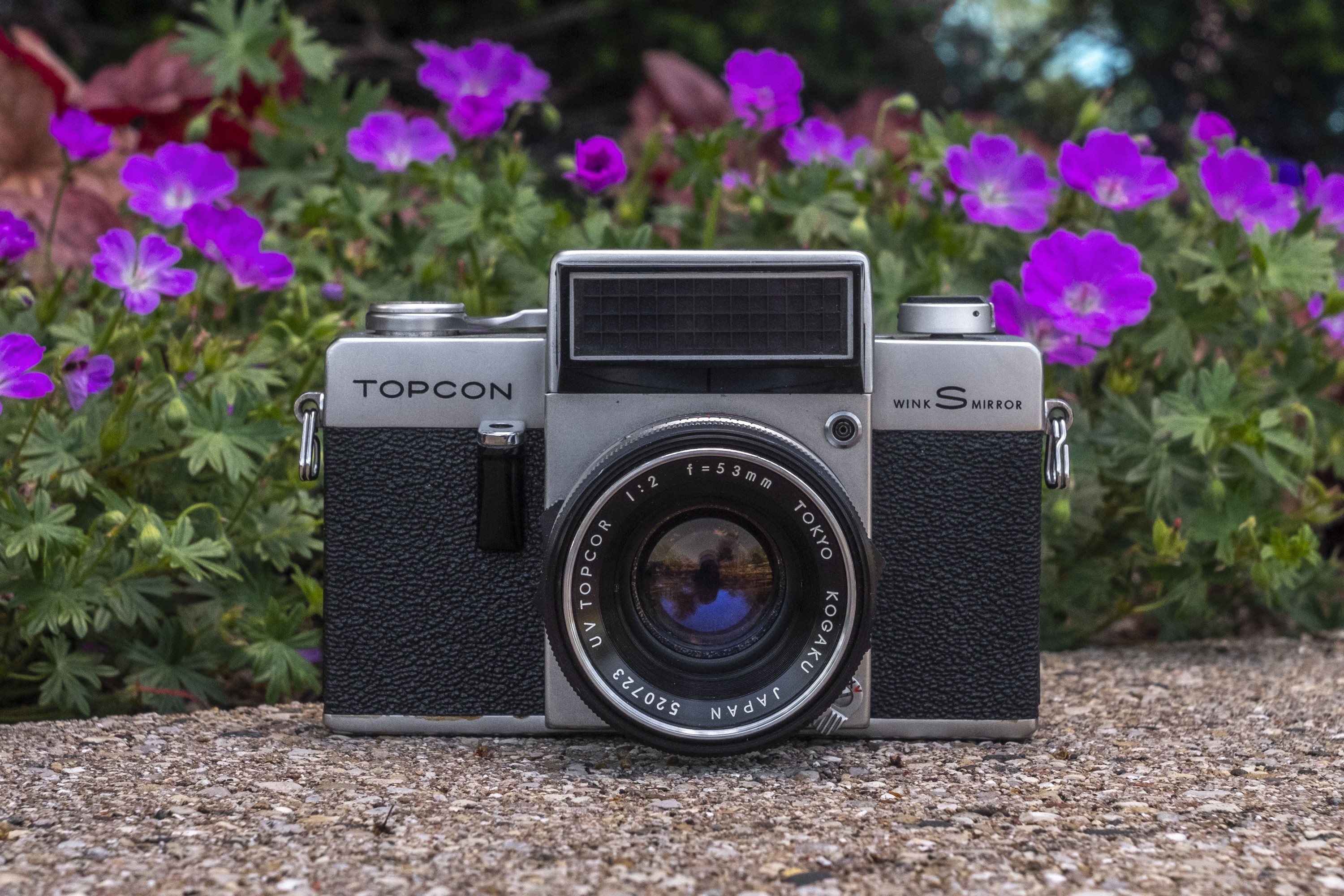
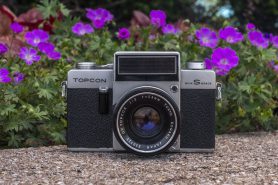
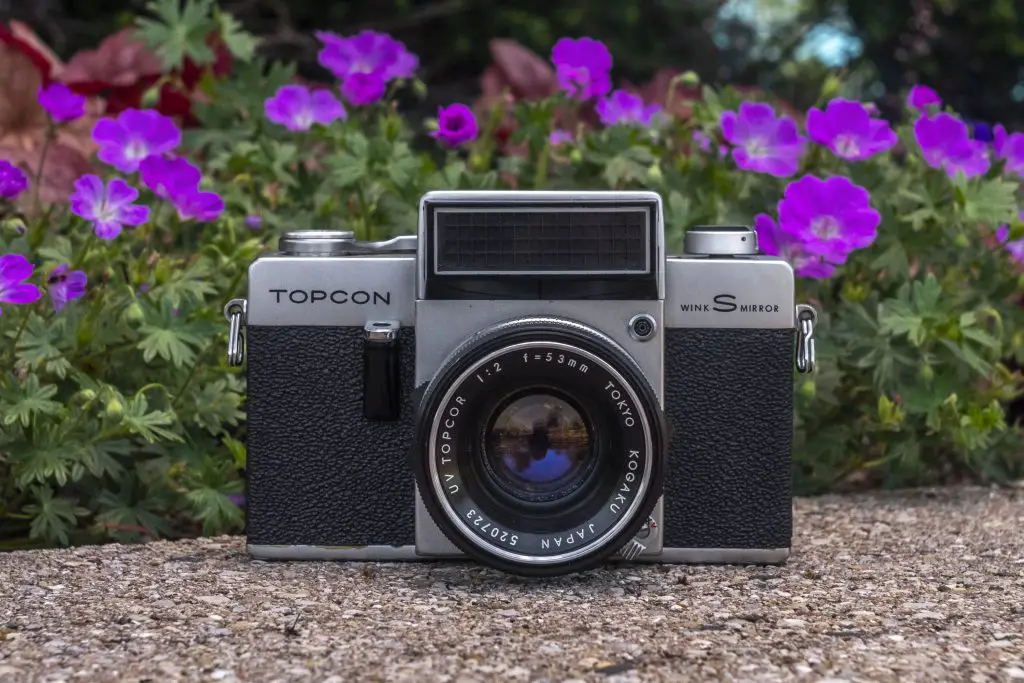
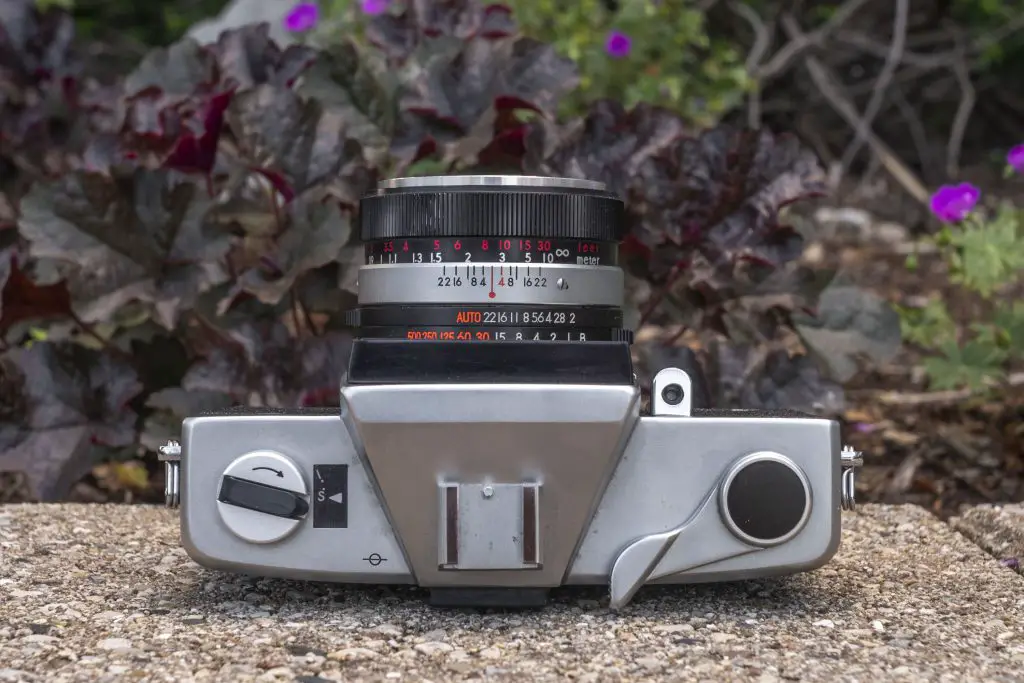
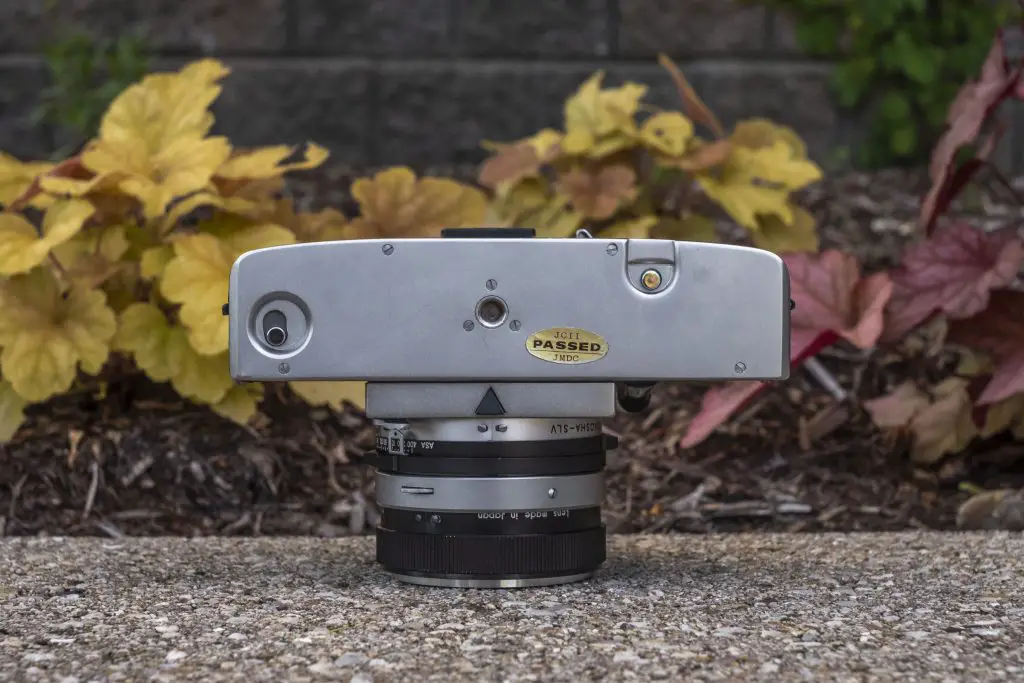
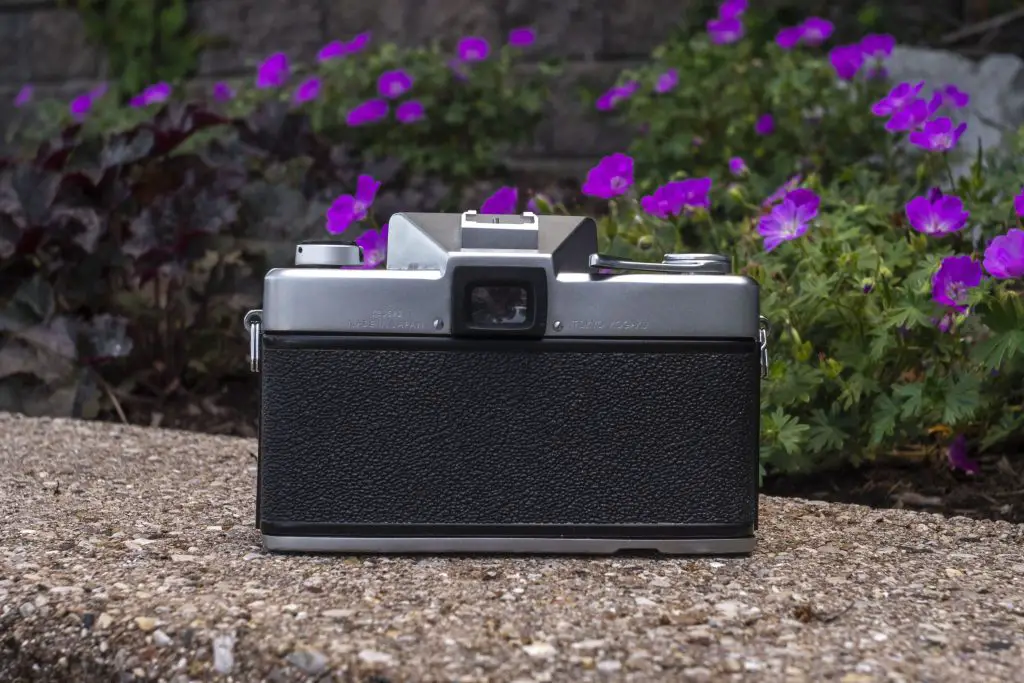
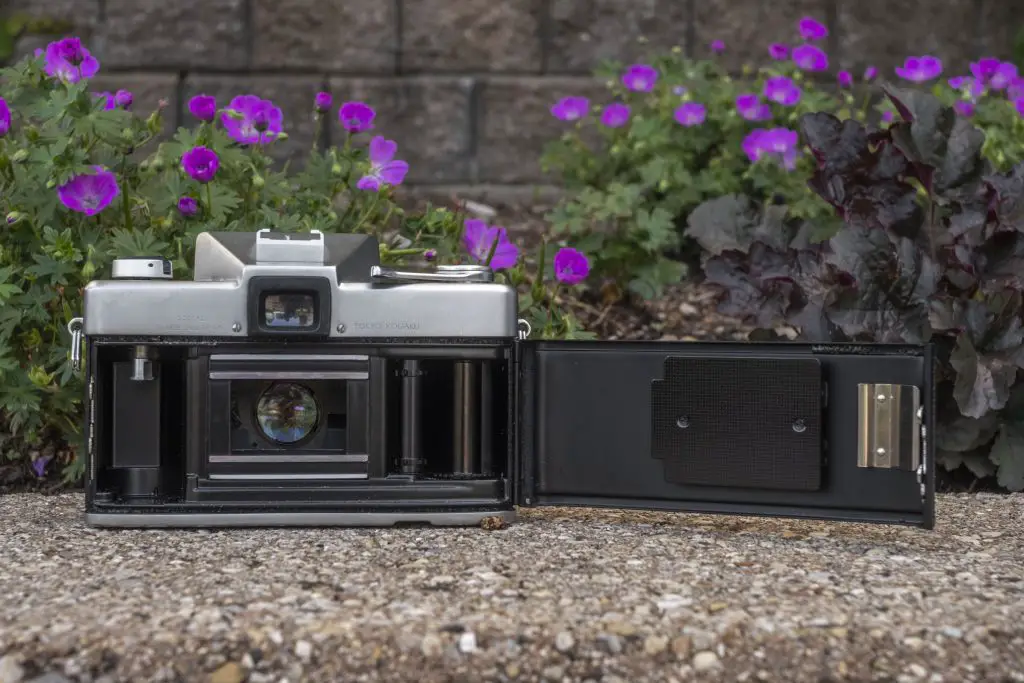
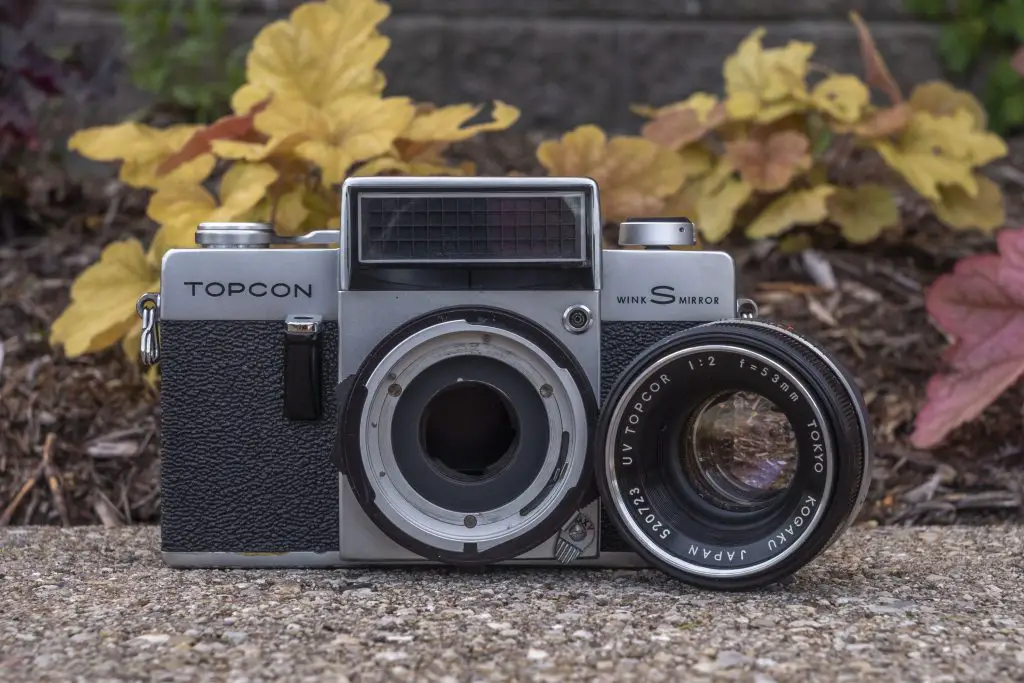
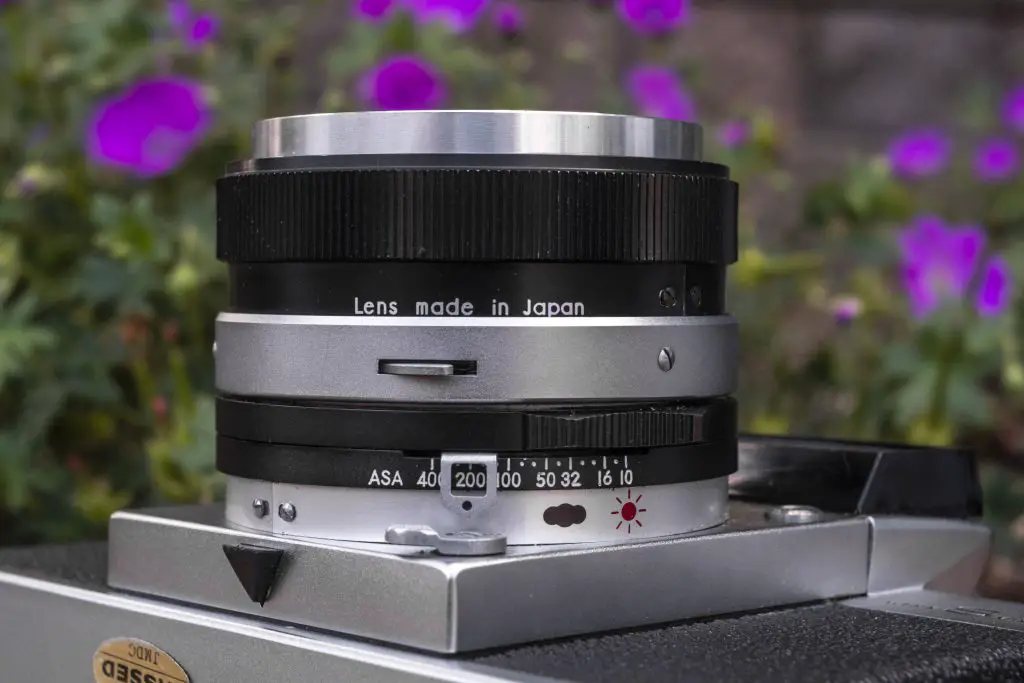






It is a pity that you are in the USA because you could have used my Wink Mirror S to do your review. Mine is in perfect working order and even the Seikosha shutter is behaving its self. I am no stranger to leaf shutter SLR’s as I collect Kowa’s and they come in two types, those that work and those that don’t. From experience I can tell you that they are far too complicated to repair yourself and every repair man that I have approached has flatly refused to go anywhere near it.
I enjoyed reading your post. Keep them coming.
Richard Mean.
Thanks for the offer Richard. Although mine was barely working, I feel that with the few pictures I did get from this one, I can tell this would have been quite an enjoyable camera to use. The viewfinder is perhaps my favorite part. You’re right though as leaf shutter SLRs are quite difficult to repair, and most people won’t touch them these days. I only have one “old” Camera of the Dead review left that will go live Friday, but this Saturday, on Halloween, I will release a 9th Cameras of the Dead post with three all new “dead” cameras never before reviewed on this, or any other site!